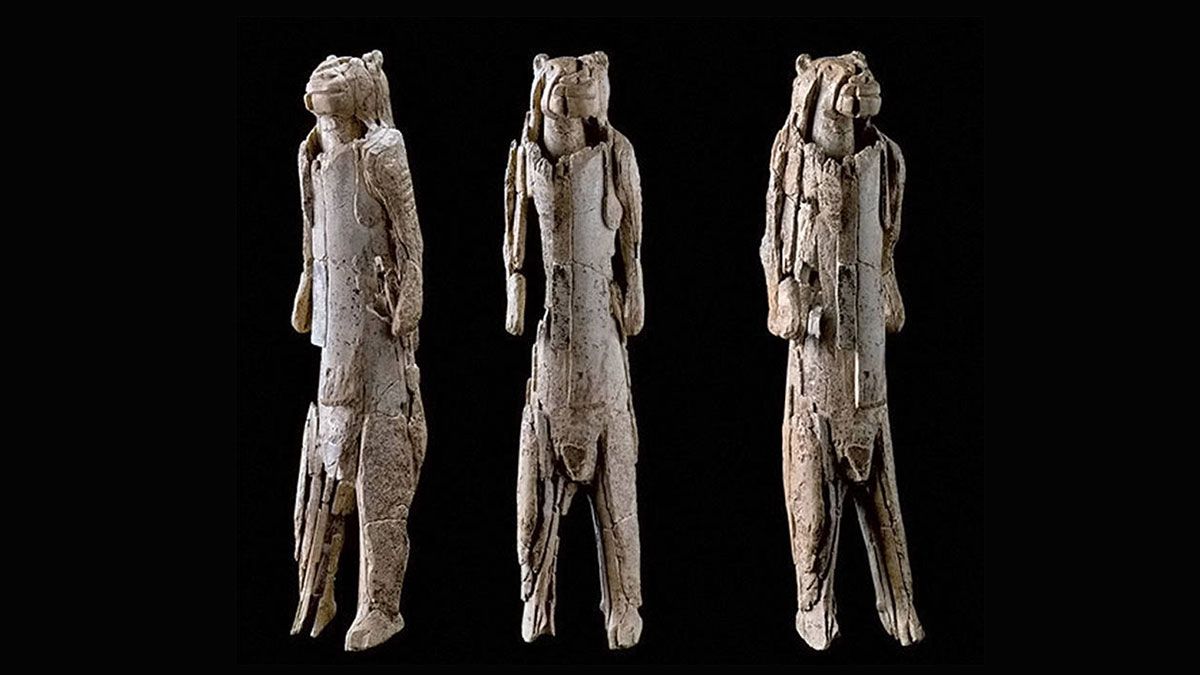The Lion Man is a Paleolithic statue which has been put together over the years from pieces discovered from Stadelhole at Hohlenstein in southern Germany. It represents a mysterious figure which is half human and half feline. Though known as the “lion man”, its half human part most likely represents a female. The statue has been created with great effort and it is one of the most famous Paleolithic sculptures known to us.
Table of Contents
S1 – Discovery
On August 25, 1939, hundreds of mammoth ivory fragments were discovered at the Paleolithic site called Stadelhole (“stable cave”) at Hohlenstein (“hollow rock”) in southern Germany. However, due to the advent of World War II, the team of archaeologists couldn’t analyze their finds. It was three decades later that archaeologist Joachim Hahn discovered a remarkable figure while putting the pieces together. It contained of both human and animal characteristics.
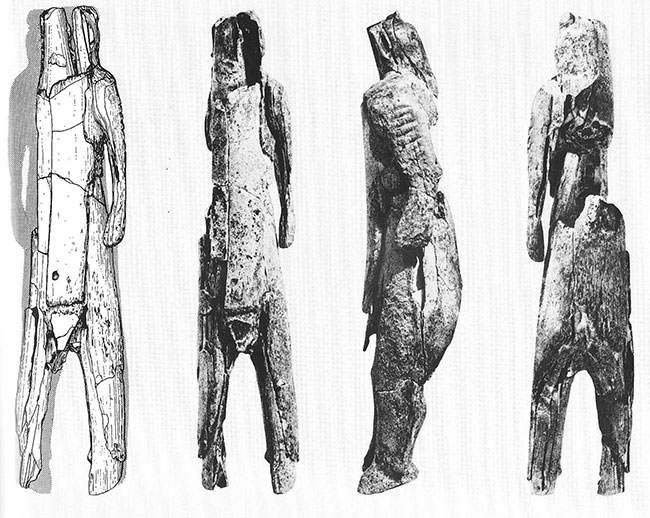
In 1982, paleontologist Elizabeth Schmidt put together additional fragments from other excavations to determine that the statue has a feline head. The pieces of the “lion man” were still being recovered as late as 2011. Though the statue is called “Lowenmensch” or “lion man”, the gender of the human represented is not known and it is more likely that it is a female. The figurine is currently on display in the City Museum of Ulm, in Germany.
S2 – Description
Lion Man of Hohlenstein Stadel is is 28.1 cm tall, 6.3 cm wide and 5.9 cm thick. It represents a standing creature which is half human and half feline. The figurine stands upright, perhaps on tiptoes. Details of its face suggest that it is attentive. It is crafted out of mammoth ivory. The lower half probably depicts a female. The appearance of male sexual anatomy is an illusion created by poor preservation of this part of the statue.
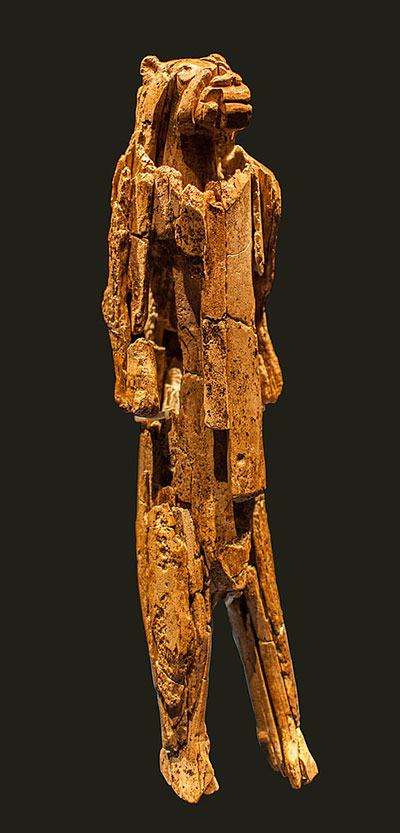
It would have been a difficult task to create the figurine. It would have involved splitting the dried mammoth tusk, scraping it into shape and using a sharp flint blade to incise such features as the marks on the arm and the face. It was then polished strenuously using powdered hematite as an abrasive. It is difficult to guess what it represents. It might be a human dressed as an animal for hunting purposes or it might represent ritualistic behavior to contact the spirit world.

S3 – Age
At one time, the Lion Man of Hohlenstein Stadel was thought to be 32,000 years old. However, it is now believed to be around 40,000 years old. This is based on carbon dating of the material from the same layer in which the sculpture was found. This makes the sculpture the oldest representation of a being that does not exist in physical form but symbolizes ideas about the supernatural.
S4 – Paleolithic Art Overview
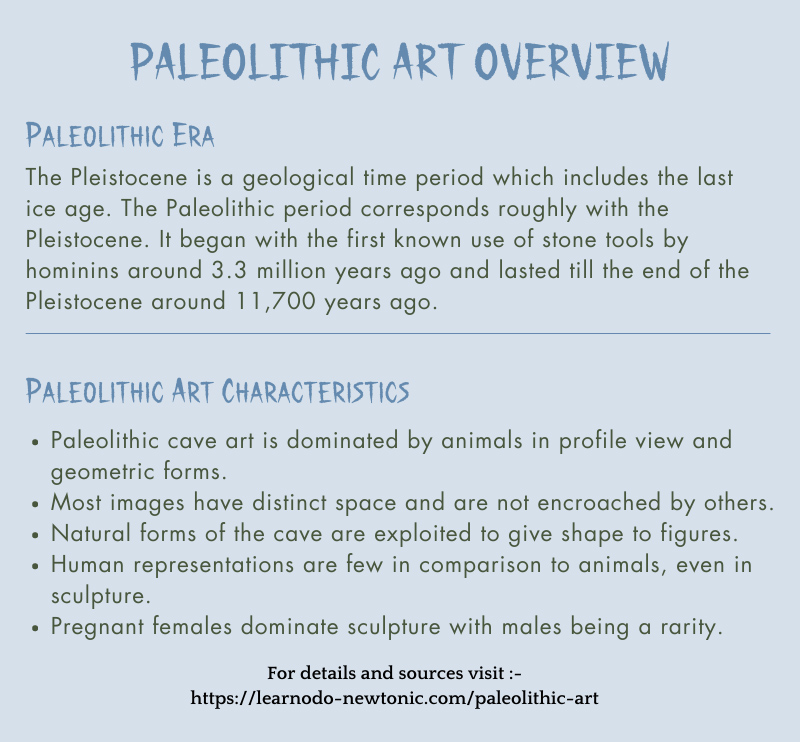
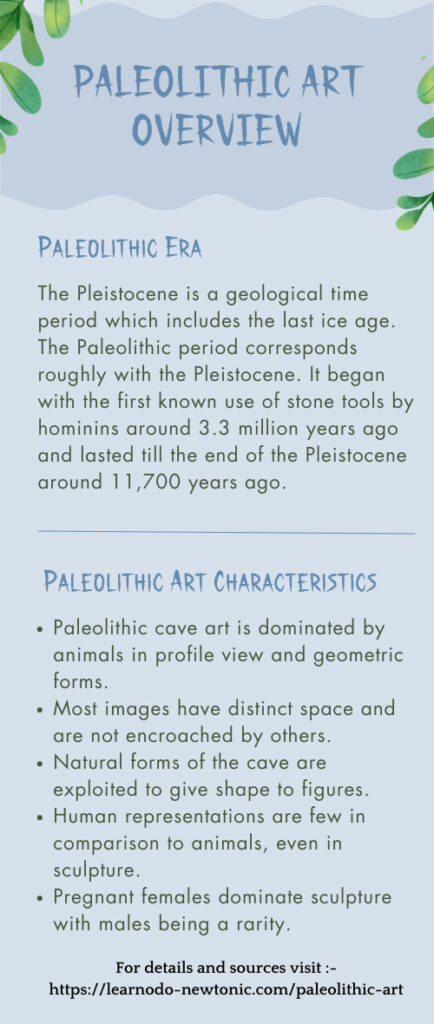
Main Sources
S1:-
Lobell, Jarrett A. (Mar/Apr 2012). “New Life for the Lion Man”. Archaeology Magazine.
S2:-
Cook, Jill. (Oct 10, 2017). “The Lion Man: an Ice Age masterpiece”. The British Museum.
S3:-
(Dec 11, 2015). “Ancient myth of the Lion Man”. Bradshaw Foundation.

